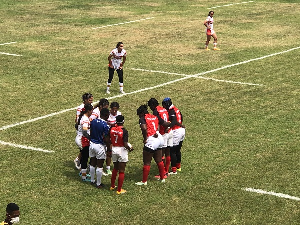Somalia worst state, Norway worlds best
It’s official Ghana is the best country in Africa.
Ghana is ranked the 53rd most failed state in the world and the least failed state in Africa by the Foreign Policy's online annual index released last Wednesday. The placement is an improvement from last year's ranking.
Out of the 15 most failed nations surveyed, ten were African nations. These include Somalia (1st), Zimbabwe (2nd), Sudan (3rd), Chad (4th), Dem. Rep. of Congo (5th), Central African Republic (8th), Guinea (9th), Ivory Coast (11th), Kenya (14th), and Nigeria (15th).
The best five nations, which were described as having the most sustainable state include Norway (177), Finland (176), Sweden (175), Switzerland (174), and Ireland (173).
Ghana emerged the best state in Africa, ranked 124 and classified as moderate state, while USA was 159th and UK 161 on the survey list.
The newly released Failed State Index 2009 was published by the United States think-tank and an independent research organisation, the Fund for Peace, and the magazine Foreign Policy. It ranked 177 countries according to their potential for failure, which was based on the totals of 12 scores for factors of state stability. Each factor received a rating of 1 to 10, 10 being the least stable. Ghana's total score was 66.2
The index's ranks are based on twelve indicators of state vulnerability - four social, two economic and six political. The indicators are not designed to forecast when states may experience violence or collapse. Instead, they are meant to measure a state's vulnerability to collapse or conflict
The Crisis States Research Centre defines a “failed state” as a condition of “state collapse” – i.e., a state that can no longer perform its basic security and development functions and that has no effective control over its territory. The Index used 12 indicators of state cohesion and performance, compiled through a close examination of more than 30,000 publicly available sources.
The survey also ranked 177 states in order from most to least at risk of failure. The 60 most vulnerable states are listed in the rankings. The list only assesses sovereign states (determined by membership in the United Nations.) Several territories are excluded until their political status and UN membership is ratified in international law.
For example, Taiwan, the Palestinian Territories, Northern Cyprus, Kosovo, and Western Sahara are not included in the list, even though some are recognized as sovereign states by some nations. Ranking is based on the total scores of the 12 indicators. For each indicator, the ratings are placed on a scale of 0 to 10, with 0 being the lowest intensity (most stable) and 10 being the highest intensity (least stable). The total score is the sum of the 12 indicators and is on a scale of 0-120. The applied indicators include demographic pressures; massive movement of refugees and internally displaced peoples; legacy of vengeance-seeking group grievance; chronic and sustained human flight; uneven economic development along group lines; and sharp and/or severe economic decline. Others are criminalisation and/or delegitimisation of the state; progressive deterioration of public services; widespread violation of human rights; security apparatus as ‘state within a state’; rise of factionalised elites; and intervention of other states or external factors. “It is a sobering time for the world’s most fragile countries—virulent economic crisis, countless natural disasters, and government collapse.

















